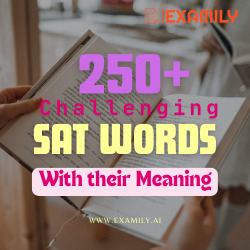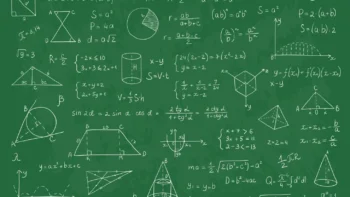Reading Time: 3-4 Minutes
The SAT Reading section is designed to test your ability to comprehend and analyze complex texts. With a variety of passages that range from historical documents to scientific articles, the Reading section can be challenging without the right strategies.
In this blog, we’ll explore proven techniques to help you efficiently navigate through the SAT Reading section, improve comprehension, and avoid common pitfalls. You’ll also find realistic examples of SAT Reading passages, followed by solutions that show how to apply these techniques.
The Structure of the SAT Reading Section
The SAT Reading section consists of five passages, each followed by a set of multiple-choice questions. The passages cover a range of topics, including:
- Literary narratives
- Historical/social studies documents
- Science articles
You will have 65 minutes to answer 52 questions, which means time management is crucial. Each passage will test your ability to understand the author’s argument, identify key details, interpret data, and analyze the structure of the text.
Ace Your SAT Prep! Predict Your Digital SAT Score in 40 Minutes, Totally Free!
Examily.AI!
Key Strategies for SAT Reading
Let’s break down the essential strategies that will help you ace the SAT Reading section:
1. Active Reading: Engage with the Text
One of the most important skills for SAT Reading is active reading, where you engage with the text while reading. This can involve:
- Highlighting key points: As you read, underline or highlight the main ideas, important details, or shifts in tone.
- Annotating the margins: Write short notes or key words in the margins that summarize paragraphs or sections. This will help you quickly locate important information when answering questions.
Realistic Example 1: Active Reading in Action
Here’s a snippet of a passage from an SAT Reading section:
Passage Excerpt:
“In the early 20th century, labor unions began to organize at an unprecedented rate. These movements, often led by immigrant workers, aimed to secure better wages and working conditions. However, opposition from large corporations was fierce, leading to several high-profile strikes and clashes.”
Question:
What is the main purpose of the passage?
A) To highlight the role of immigrant workers in labor movements.
B) To describe the challenges faced by labor unions in the early 20th century.
C) To explain the strategies used by corporations to oppose unions.
D) To summarize the outcomes of high-profile strikes in the early 20th century.
Solution:
By actively reading and annotating, you can quickly identify that the passage focuses on labor unions and the opposition they faced from corporations. The correct answer is B) To describe the challenges faced by labor unions in the early 20th century.
2. Focus on the Passage’s Structure
The Reading and Writing section includes questions that require interpreting charts, graphs, and tables. These questions test your ability to analyze and compare data, a skill that can be challenging under time constraints.
- Introduction and thesis statement: The first paragraph often introduces the main idea.
- Supporting details: The middle paragraphs provide evidence or examples that support the thesis.
- Conclusion: The final paragraph may summarize or reinforce the key argument.
When reading, mentally outline the passage to keep track of how the argument develops.
Realistic Example 2: Understanding Passage Structure
Here’s an excerpt from a science-based passage:
Passage Excerpt:
“Studies on coral reefs have revealed that rising ocean temperatures are causing coral bleaching, a process in which coral expels the algae living within its tissues. This bleaching weakens the coral, leaving it vulnerable to disease and death. As scientists monitor coral health, they hope to develop strategies to protect these vital ecosystems.”
Question:
What function does the final sentence serve in the passage?
A) It provides a solution to the problem discussed.
B) It summarizes the causes of coral bleaching.
C) It introduces the scientists’ approach to the problem.
D) It contrasts coral bleaching with other environmental issues.
Solution:
The final sentence discusses how scientists are working to address coral bleaching, which suggests the correct answer is C) It introduces the scientists’ approach to the problem.
3. Use Context Clues to Infer Meaning
Vocabulary questions on the SAT Reading section often ask you to determine the meaning of a word based on its context. It’s important to look at the sentence before and after the word in question to gather clues about its meaning.
Realistic Example 3: Inferring Word Meaning from Context
Here’s another passage excerpt:
Passage Excerpt:
“The results of the experiment were initially met with skepticism, as many researchers doubted the accuracy of the findings. However, after additional trials confirmed the data, the scientific community began to acknowledge the study’s significance.”
Question:
As used in line 1, “skepticism” most nearly means:
A) Acceptance
B) Doubt
C) Curiosity
D) Praise
Solution:
The phrase “many researchers doubted the accuracy of the findings” indicates that skepticism means doubt in this context. The correct answer is B) Doubt.
Time Management in SAT Reading
With only 65 minutes to answer 52 questions, time management is crucial. Here are some tips to help you stay on track:
Skim the passage first: Instead of reading every detail, skim through the passage to get a sense of its structure and main ideas. You can go back and read specific sections in more detail when answering questions.
Answer questions in groups: Questions are generally ordered to follow the structure of the passage. Focus on answering questions for one section of the passage before moving on to the next.
Keep an eye on the clock: Aim to spend no more than 12-13 minutes on each passage and its corresponding questions. If you’re stuck on a difficult question, flag it and come back later if time permits.
Your SAT Success Starts Here—Unlock Your Potential with Examily’s AI-Driven Prep!
Improving Your SAT Reading Score
Success in the SAT Reading section doesn’t just come from knowing the content—it comes from consistent practice and honing your skills. Here are some additional tips:
- Practice regularly: Use SAT prep resources like Examily and UWorld to access SAT question banks and take practice tests. This will help you build familiarity with the types of passages and questions you’ll encounter on test day.
- Read a variety of texts: To prepare for the diverse range of SAT passages, read widely. This includes literary fiction, historical essays, scientific articles, and opinion pieces.
- Review your mistakes: After each practice test, review the questions you got wrong and understand why you missed them. This will help you avoid repeating the same mistakes in future tests.





